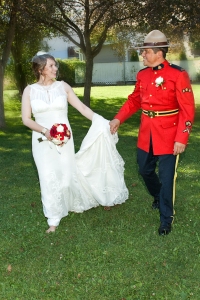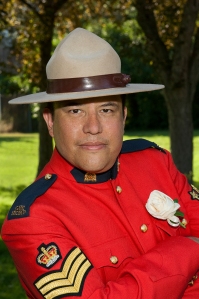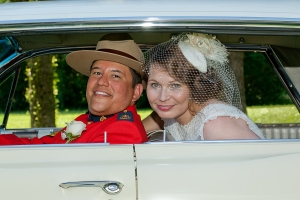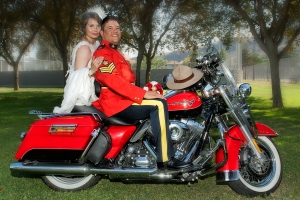Using a hot shoe or auxiliary flash is confusing for many photographers, and when I say that I prefer adding flash to all my portraits whether inside or outside, on overcast or bright sunny days, and that I rarely make a portrait without one, will often produce quizzical and disbelieving looks from photographers.
I got one of those looks recently at a wedding I was photographing under a cloudless +35C day. The unforgiving conditions were sunny and bright with participants’ faces constantly affected by strong shadows. A guest, wielding a sophisticated DSLR that was sporting a very wide angle lens, inquired about my bracket-mounted flash and politely listened when I said I always used flash, however, I could tell that he walked away still confused as to why I would bother to use a flash when there was plenty of daylight. I suspect that the unflattering shadows across the subjects’ faces were not all that evident on his camera’s LCD, or he just did not see the problem. Besides, he might have thought himself more of an event chronicler, or, because of the wide-angle lens he was employing, an artist.
I read a query in an online photographer’s forum asking, “I’ve been shooting headshots recently and it got me thinking a lot about metering. How do I meter for flash portrait photography on location? I know that without a flash, I would just spot meter their face…and snap. What happens when I have an off camera flash? Do I just meter normally then shoot? Because when I do this, once the flash goes off, the exposure would be completely different than what I’ve just metered, which would usually mean overexposed. This is so very confusing. Please shed some light on this (no pun intended).”
I also recall a friend’s class assignment to photograph someone wearing a wide brimmed hat under the midday sun. (My apologies to those that adhere to the words from Noel Coward that “only mad dogs and Englishmen go out in the midday sun”).
She explained, “Our assignment was to light the shadowed face under the hat and still have properly exposed surroundings.” At that time flash technology only produced constant light. The solution was to diffuse the light by placing a white handkerchief folded once or twice over the flash head to open up the deep shadow.
Fortunately, modern TTL flash is almost foolproof and only a modicum of thought is required on the part of the photographer as to how much light should be added for the subject’s exposure.
My camera is usually set to manual exposure mode. That allows me, not the camera, to choose the overall ambient exposure, and to add flash to those areas that are underexposed by shadows. I meter the existing light, set the exposure, and make tests using the flash’s exposure compensation feature to increase or decrease the output level. I then check the histogram to see if there are blinking borders around any white areas indicating over exposure, and if I observe them I dial the exposure compensation down, till the flashing borders disappear on further test shots. That highlight-warning feature is set in the camera’s menu.
My photographs from that wedding day are evenly exposed with attractive, open shadows and do not appear as if there was a flash involved. Besides, using a flash really was not much more effort than if I didn’t, and I did not have to spend hours using postproduction software to lighten and darken my subjects from that day.
I use a bracket that places the flash high above the camera that can be quickly removed if I want to light the subject from one side. The bracket isn’t a must, however, I recommend a connecting cord from camera to flash so it can be used off camera.
I also advise reviewing the camera manual to determine if it has a feature called “high speed sync” that allows for a high shutter speed when using a flash. That’s a discussion for another time, but I recommend doing some recon on the web where there is lots of information.
Blending flash with ambient light isn’t really a mystery. The combination of off-camera flash, and a light meter to measure ambient and flash contributions, will give you complete control to craft portraits your friends and family will love.
A burst of flash will reveal your subject’s eyes and soften shadows all round, so it’s definitely a good thing and will improve your pictures.
I appreciate comments. Thanks, John
My website is at www.enmanscamera.com






Using flash during daylight is pretty much a must for most portraitures and weddings. I do prefer to do as much as possible with natural light and reflector, but when working under a strong sun, a flash is a must.
What’s your sync speed on your slr/dslr when you are using your camera in manual mode? I hate the 1/200 or 1/250 sync speed that most cameras use. Cant nicely shoot shallow depth of field outside with a flash during a hot sun.
If you camera and flash support high speed, then, that’s another bonus, but you are then pretty much handing over the controls over to the camera/flash.
Thanks for your article John. A great read and good advice for photographers.
LikeLike
thanks Mikael, glad ya liked me blog. In this article I mentioned TTL. and also “high speed sync” . My shutterspeed is varies between 1/500th and 1/8000th.
LikeLike
Does you shutterspeed go that high on manual flash mode as well? I though the norm was 1/250 unless you have a leaf shutter like Hasselblad which does 1/500…. I know in TTL and High Speed you can do higher speed of shutter, but in manual mode or if you connect a studio flash to your camera, you would normally not be able to go very fast.
LikeLike
Yes you are absolutely right. Highspeed sync is only available with a dedicated TTL flash.
I have Nikon, I think Canon and maybe even Pentax will do that also.
I rarely shoot other than Manual, But Joe McNally’s books all recommend Aperture priority with TTL.
When TTL isn’t an option, as you write, we are stuck with the particular flash unit’s sync speed. However, we can mess around with the camera’s exposure compensation. Even a ND filter helps when that f2.8 depth of field is one’s goal.
LikeLike
One pretty large penalty for using HHS to keep in mind is the power loss when using it. Since HHS strobes the light instead of dumps it all in one burst, you usually loose around one full stop of flash power using it. On top of that if you use TTL, due to the preflash used to gauge flash output, you are down below 1/2 power of your flash’s maximum when all is said and done. Therefore, when I shoot fast I use TTL, but if I have time or need the power, I always set my flash power manually.
LikeLike
You will notice that I wrote, “I also advise reviewing the camera manual to determine if it has a feature called “high speed sync” that allows for a high shutter speed when using a flash. That’s a discussion for another time, but I recommend doing some recon on the web where there is lots of information.”
I hope people will take my advice and do some research.
I never use the word “penalty” cuz I want people to use High sync as just another tool. My discussion around it is usually on portraits and wedding coverage..when I suggest getting close.
My approach to photography is much the same as my approach to carpentry. The right tool for the job and High Sync is only another tool.
Your advice Mark, that I wish more photographers heeded, “when I shoot fast I use TTL, but if I have time or need the power, I always set my flash power manually.” Is absolutely dead on and so important to out-of-doors photography.
Thanks so much for your knowledgable remarks. As always your perspective and experience is important to me.
LikeLike
Thanks; I’ll re-read this important information.
LikeLike
I appreciate your time to comment…and I know you’ll have fun as you tune that ttl flash to your personal style.
LikeLike
Always a pleasure to hear your thoughts and view your photos.
LikeLike
Thank you.
LikeLike
Good read thank you John.
LikeLike
Glad ya liked it Sam.
LikeLike
Thank you. Very educational and helpful, including the above comments.
LikeLike
Thanks Lignum, I am glad you liked my thoughts..Certainly not the same style as your thought provoking street work though.
LikeLike
Hola,
Sinceramente hemos encontado tu entrada del blog verdaderamente útil.
Esperemos que siga redactando este tipo de entradas!
Volveremos en breve a su blog para ver las novedades
LikeLike
Gracias. Me alegro de que haya disfrutado de mi blog.
LikeLike
Thank you for sharing this tip with us. Your pictures are so vivid. They are the perfect demonstration.
LikeLike
Thank you.
LikeLike